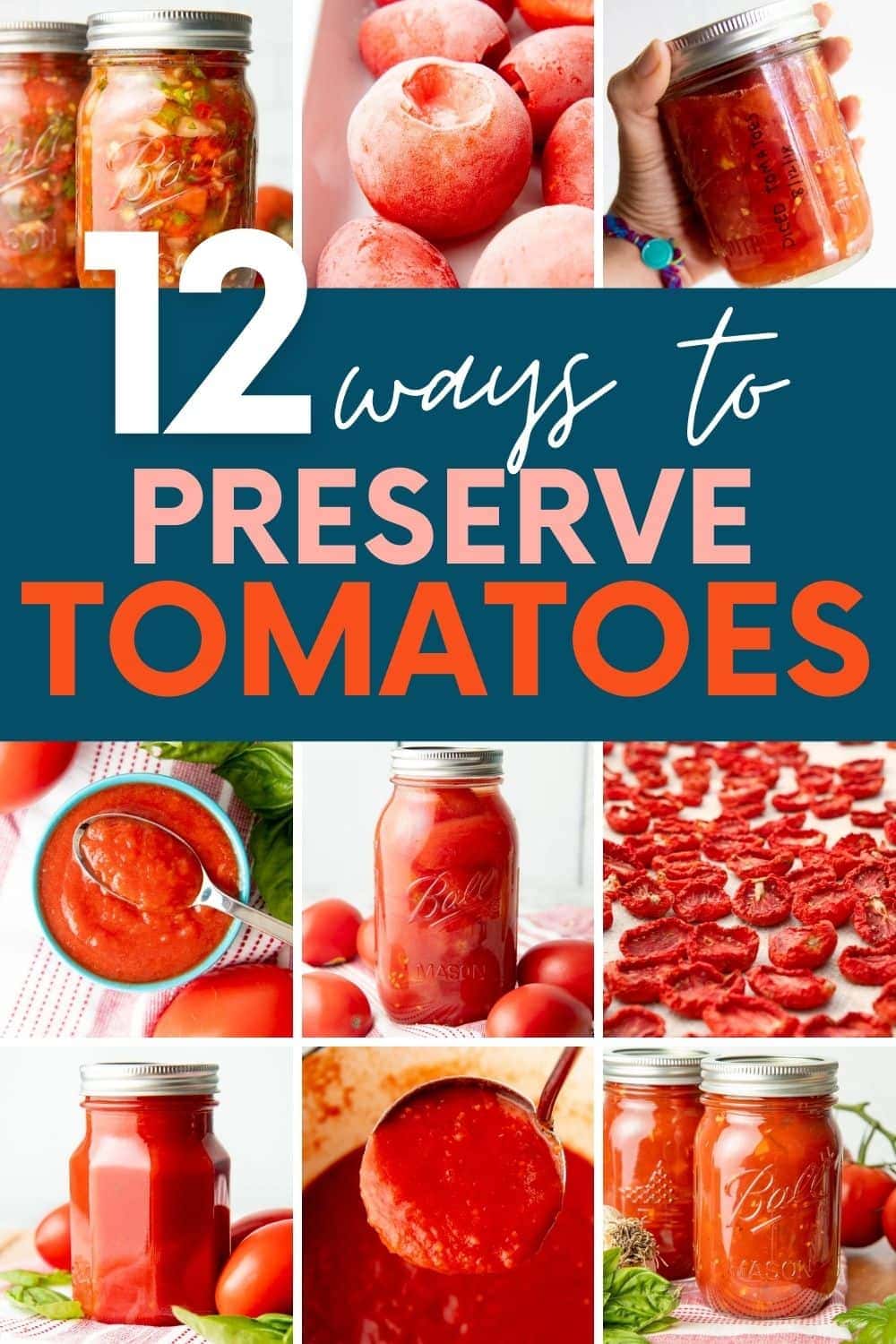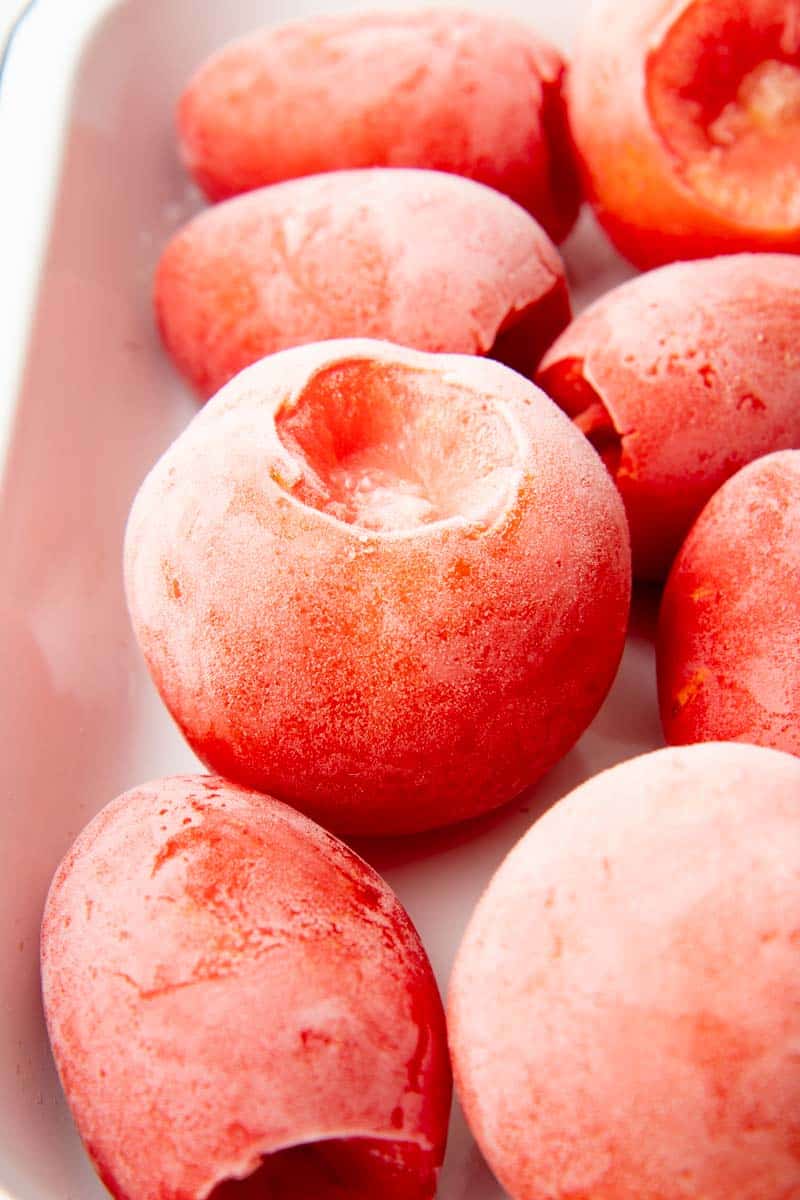Fresh tomatoes are one of summer’s best treats. But how can you keep that flavor going all year long? We’ll show you our favorite ways to preserve tomatoes for winter.
The first homegrown tomato of the season is such a gift! But by the time mid-to-late summer comes ’round, a single tomato plant can have you absolutely drowning in tomatoes. So once you have your fill of caprese salads and tomato sandwiches, what should you do with all of those fresh tomatoes? Well, we’re here with some great ideas!
Tomatoes are an excellent choice for preserving, and you can take your fresh tomatoes and turn them into all kinds of wonderful goodies you’ll be able to eat on for months to come. Let’s learn about preserving tomatoes!
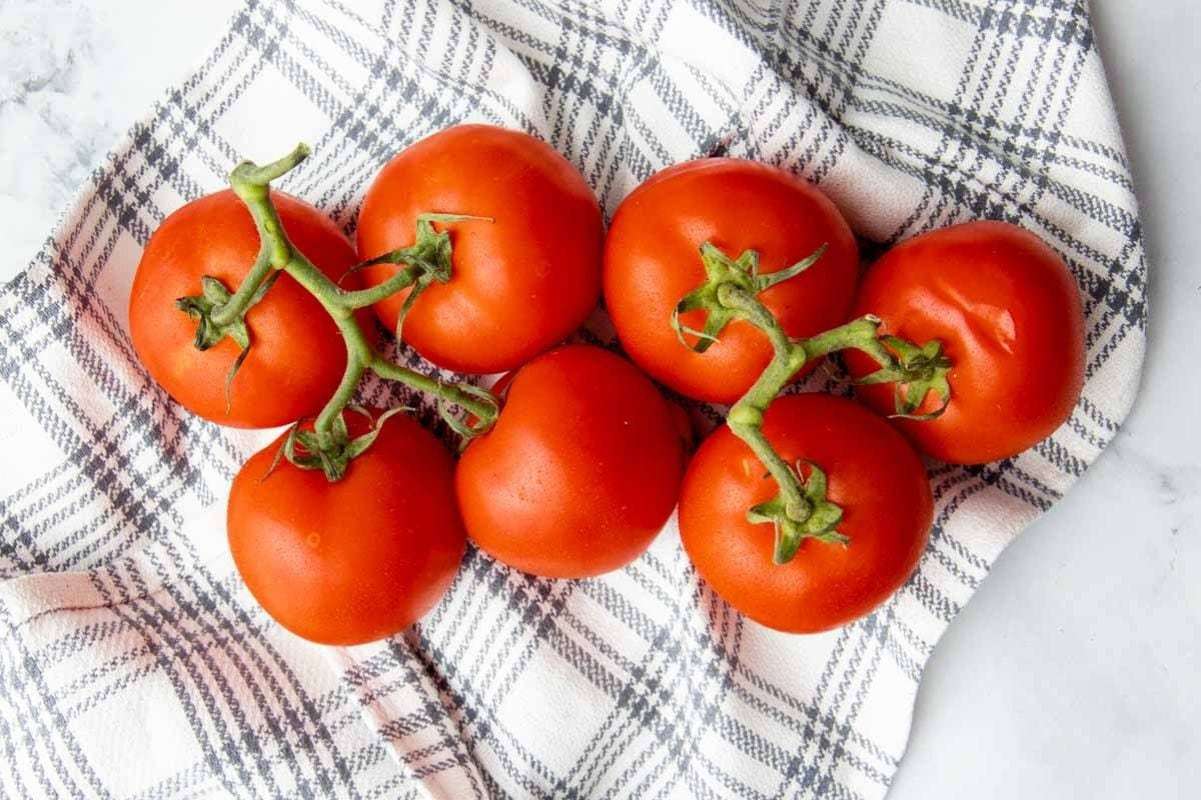
How long can tomatoes be stored?
It all depends on what you do with them and how you put them up! Fresh tomatoes are generally fine on the counter for about a week.
For the longest shelf life, you’ll want to turn to canning or freezing. Freezing will buy you 8-12 months (longer if you vacuum seal before freezing!), while canned tomatoes are best used within 12-18 months. You can still safely use them after these times, but the quality will decline—you’ll see more freezer burn on frozen tomatoes, and the color, texture, or flavor may change on the canned.
Dehydrated tomatoes should be used within 6 months if they are being stored at room temperature, but can be stretched to a year if you put them in the fridge or freezer.
Why shouldn’t you refrigerate tomatoes?
STOP. Do not put your surplus of tomatoes in the fridge! The chill of the fridge is colder than tomatoes like, and it will dampen the flavor and destroy the texture.
What should I do with lots of fresh tomatoes?
When you have a windfall of tomatoes, you have tons of options for using up those beautiful gifts of summer.
If you’re looking to cook with the tomatoes:
- Make fresh tomato sauce for topping your favorite pasta.
- Turn a bunch into this garden-fresh tomato soup.
- Slice up your favorites and place them on this Grilled Tomato and Herb Flatbread.
- Mix them with some other garden goodies to make this Tomato and Cucumber Salad.
- Use your cherry tomatoes for easy Caprese Skewers.
- Cherry tomatoes are also great in our Lemon Orzo with Shrimp.
If you’re looking to preserve the tomatoes, keep reading! We have tons of great ideas below.
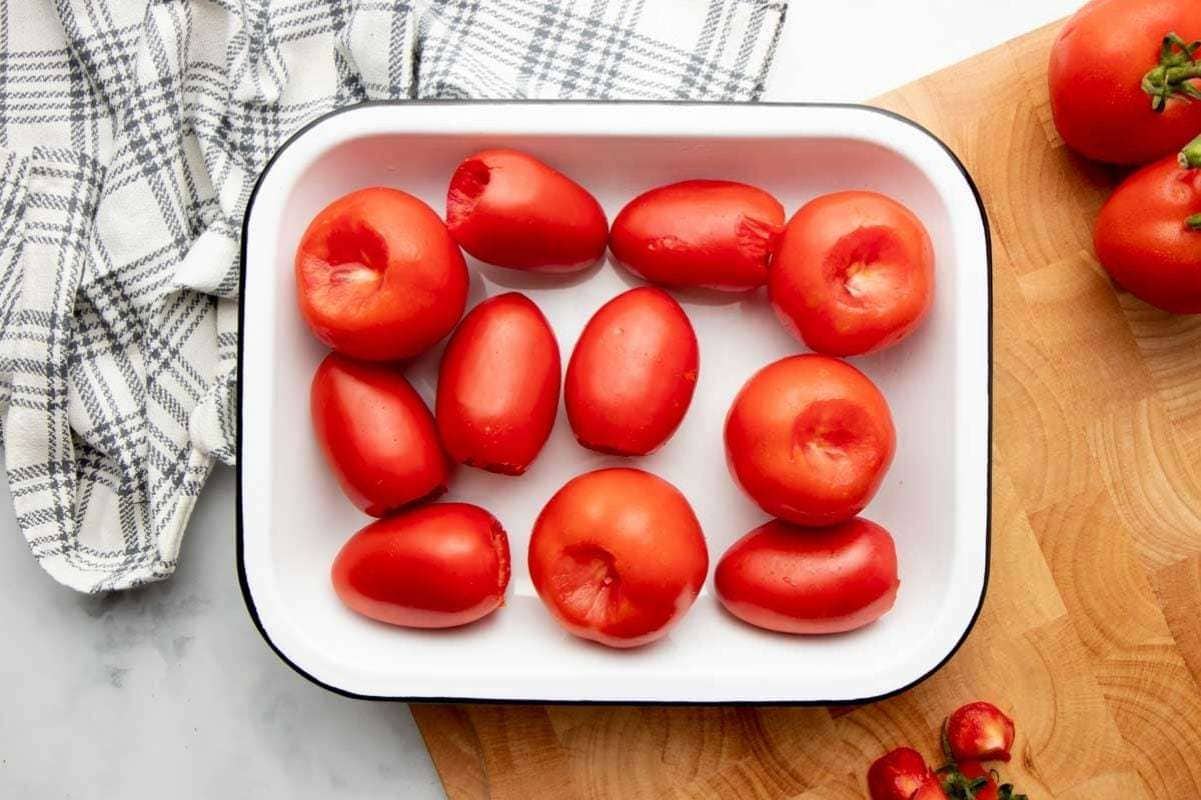
What is the best way to preserve fresh tomatoes?
The best way to preserve tomatoes depends on how you are planning on using your tomatoes. If you’re looking for a quick way to put up a windfall, freezing tomatoes is probably your best option.
If you’re looking for the most versatile way to preserve tomatoes, either canning tomato sauce or canning whole tomatoes is probably the direction you want to go. Both of those canned goods can be used in a ton of different dishes!
How to Freeze Tomatoes
Freezing tomatoes is the quickest and easiest way to get a batch of tomatoes preserved for another day.
Freezing Whole Tomatoes
If you have the freezer space, freezing whole, cored tomatoes is the speediest way to deal with a tomato overload. You don’t even have to peel them first—when thawed, the peels of previously-frozen tomatoes will just slip right off! We store them in zip-top freezer bags in the freezer or in vacuum sealer bags.
Freezing Tomato Puree
You can also freeze tomato puree. Just pour the puree either into freezer safe bags and freeze flat, or freeze in an ice cube tray. Tomato puree is super versatile and can be used in a ton of dishes. You don’t even have to thaw the puree cubes before dropping them into your favorite soup or stew recipe!
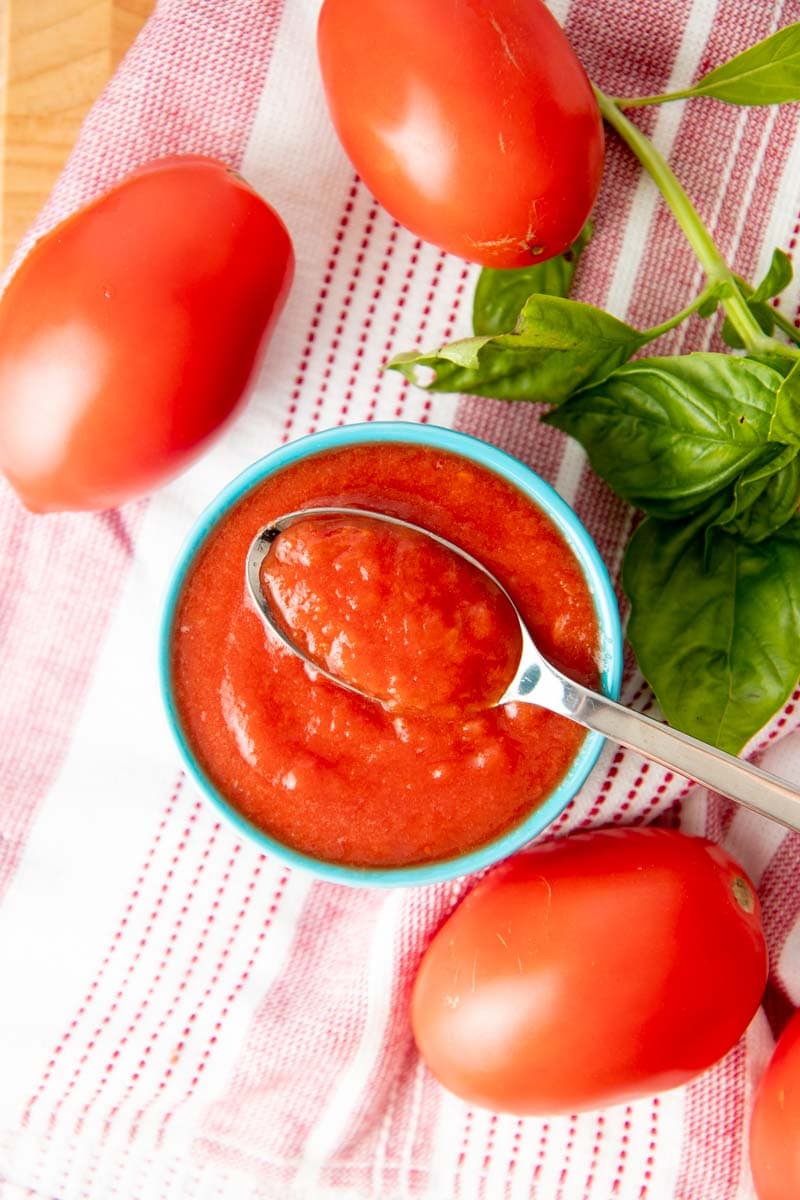
How to Can Tomatoes
Tomatoes are right on the line of being acidic enough for safe water bath canning—some tomatoes are more acidic than others.
So to keep your canned tomatoes safe to eat for months to come, you absolutely must add citric acid or bottled lemon juice to your tomatoes to keep bacteria like botulism from growing if you are boiling water bath canning. All of the recipes below are safe and tested for waterbath canning, so be sure to follow them exactly as they are written.
Wholefully Protip
You can also can tomatoes using a pressure canner, but the recipes below are boiling water bath canner recipes, which are perfect for beginning canners.
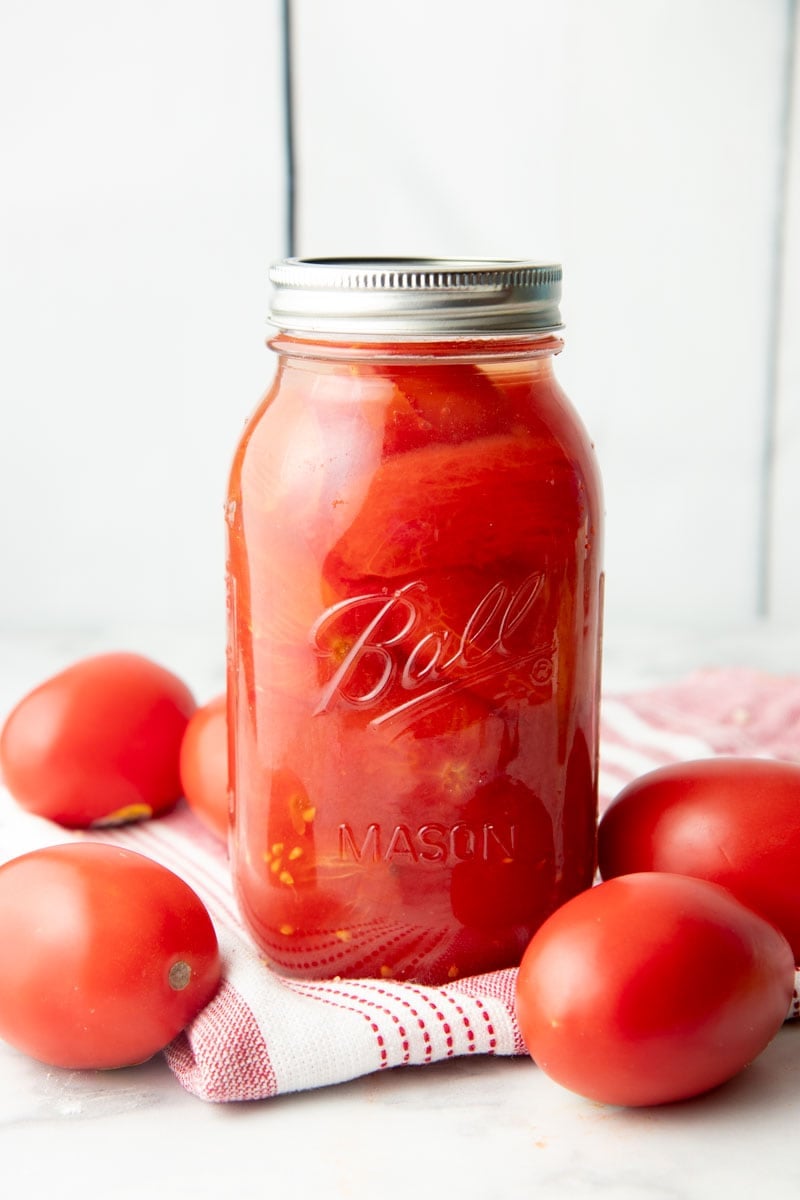
Canning Whole Tomatoes
Canning whole tomatoes is an easy way to get a ton of tomatoes put up quickly. Whole tomatoes can then later be turned into diced tomatoes, crushed tomatoes, or tomato sauce with ease.
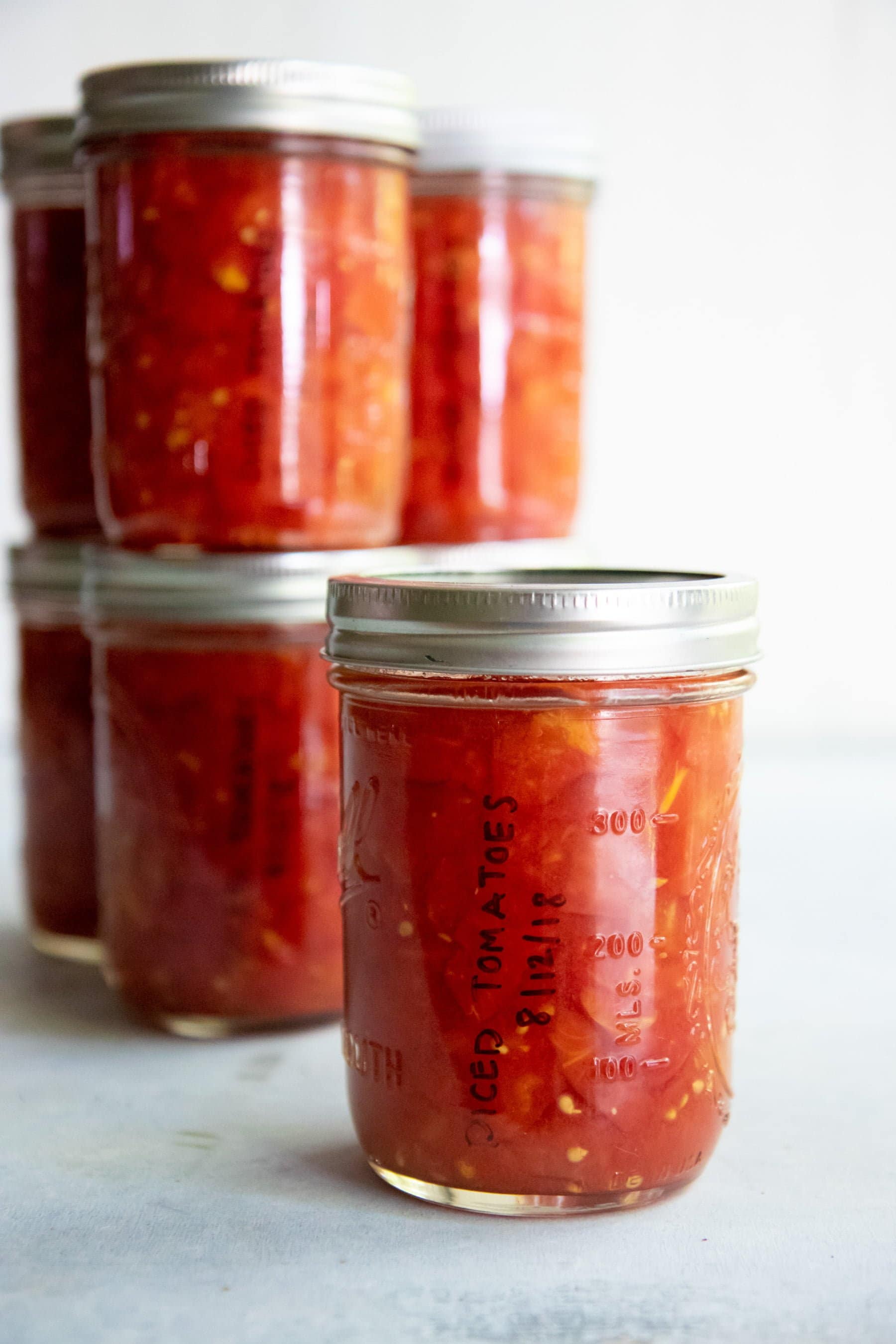
Canning Diced Tomatoes
We always make sure to can at least a couple batches of diced tomatoes. They are just so useful! This pantry staple can be used in soups, stews, sauces…just about everything!
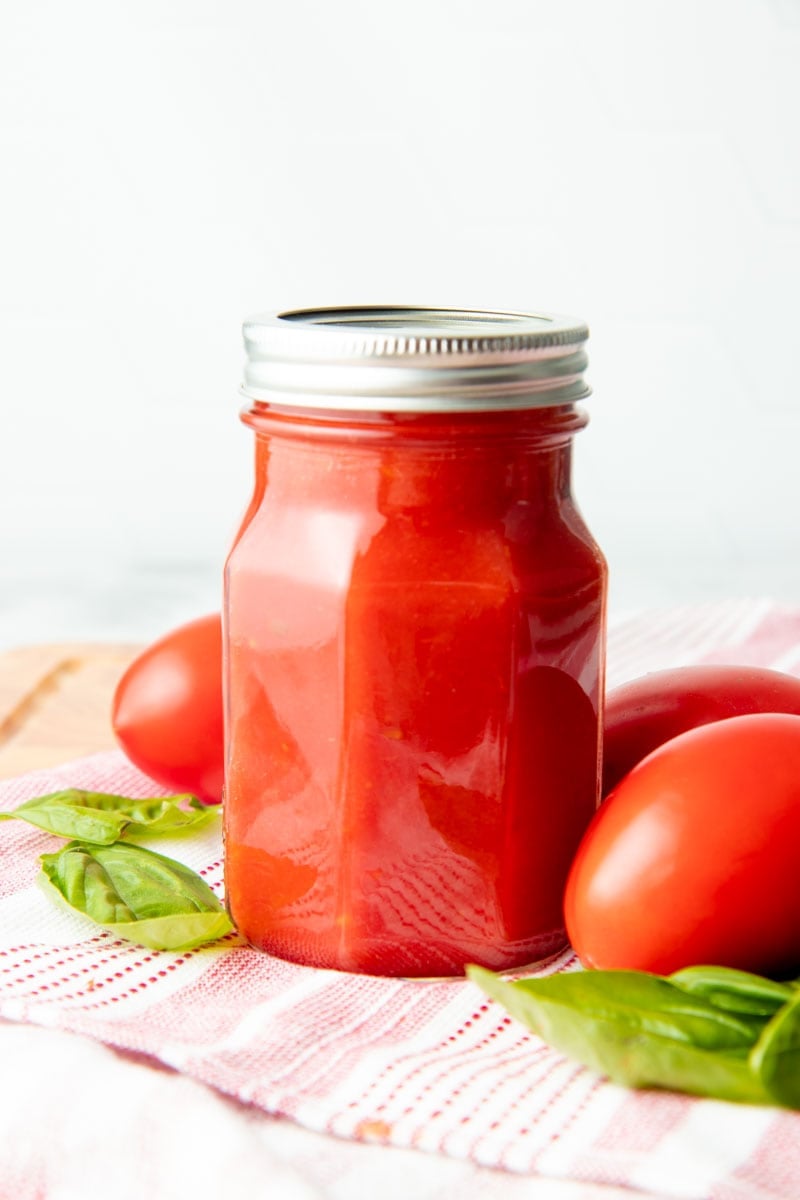
Canning Tomato Sauce
This tomato sauce is another simple staple that can be used in a million ways. The only ingredients are tomatoes and an acidifier, so you can use this tomato sauce as a base for all kinds of recipes—spaghetti sauce, pizza sauce, enchilada sauce, and so much else!
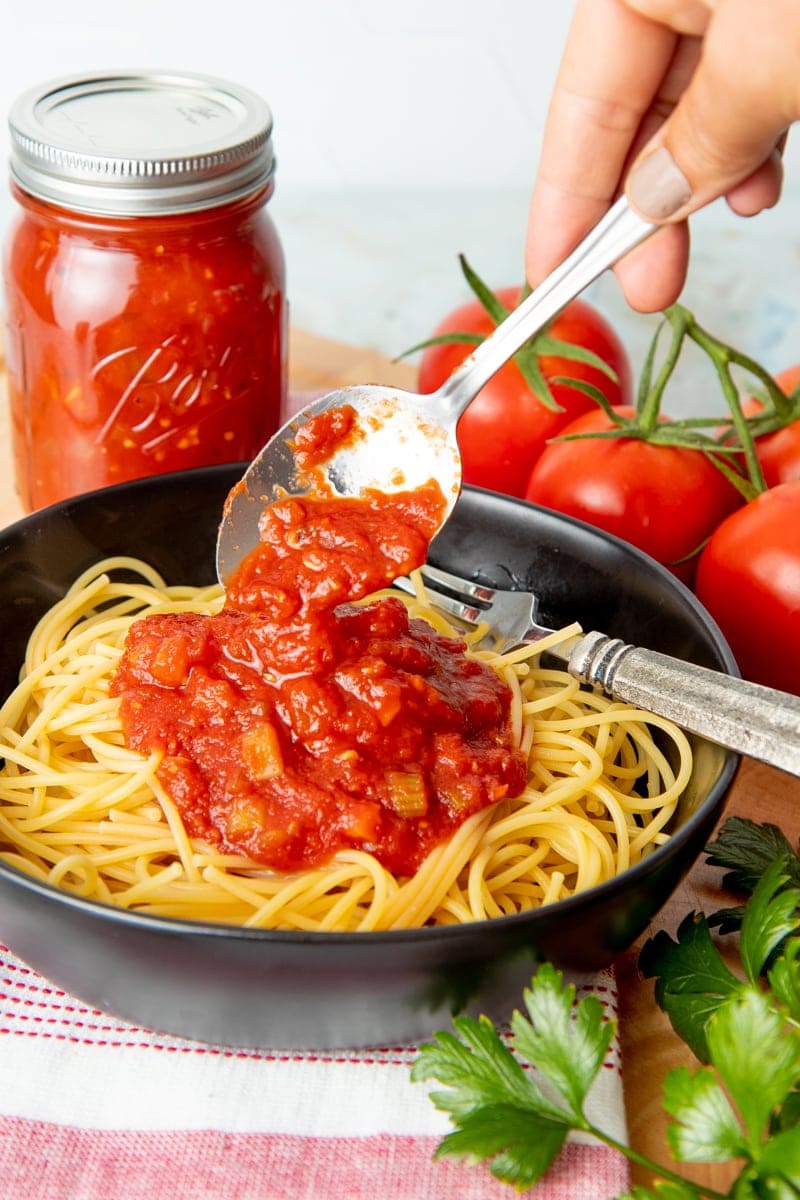
Canning Spaghetti Sauce
Spaghetti sauce is a lifesaver on a busy weeknight. Crack open a jar of spaghetti sauce, boil some pasta, and you’re well on your way to an easy entrée.
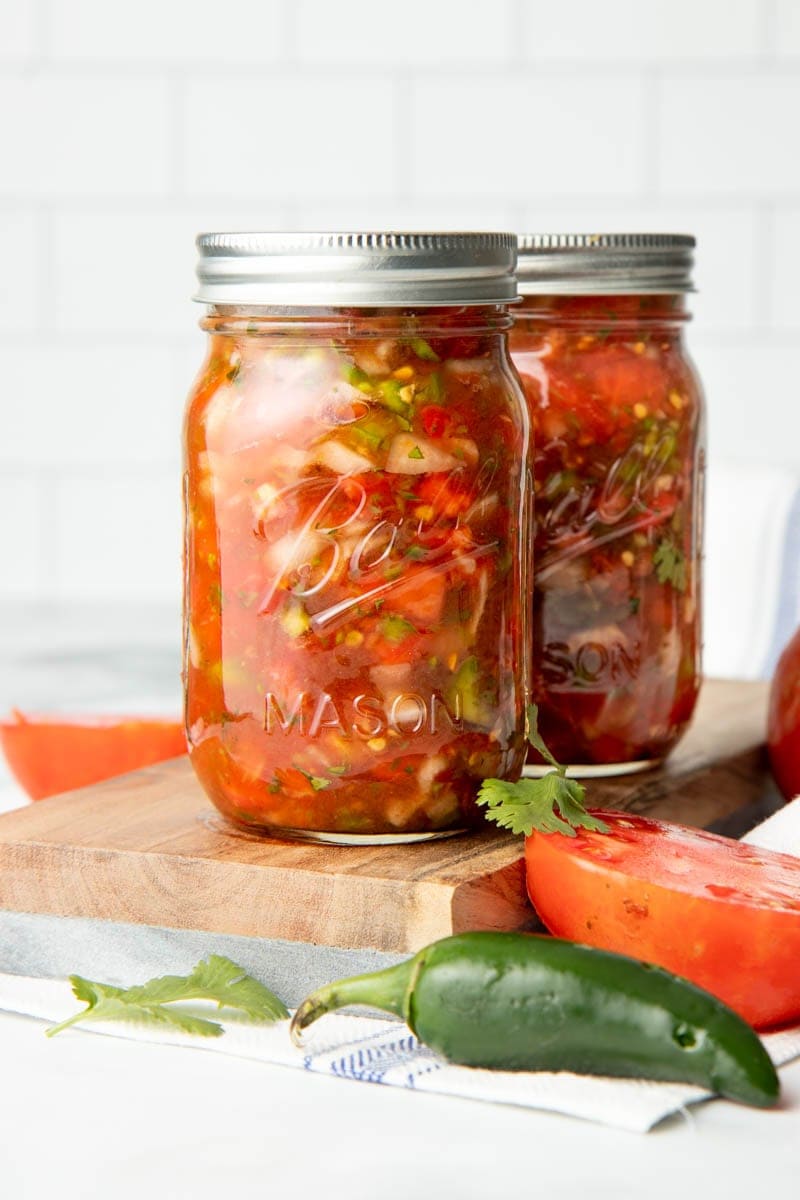
Canning Salsa
We eat so much salsa throughout the year, and typically try to put up at least three dozen pint jars every summer. We love a good chips and salsa snack, plus we are always tossing it into tacos and other Tex-Mex dishes.
How to Dry Tomatoes
There are three methods for dehydrating tomatoes, each with their own pros and cons. Dried tomatoes are great on pizzas and salads, or rehydrated to use in recipes. But one of my absolute favorite uses for dried tomatoes is Tomato Powder!
This is one of my favorite secret ingredients. Just dry some tomatoes until they are brittle instead of pliable. Allow them to cool completely, and then grind the tomatoes in a coffee grinder, and you have tomato powder! Mix it with a little water to make instant tomato paste, or sprinkle some into sauces or soups for a little flavor boost.
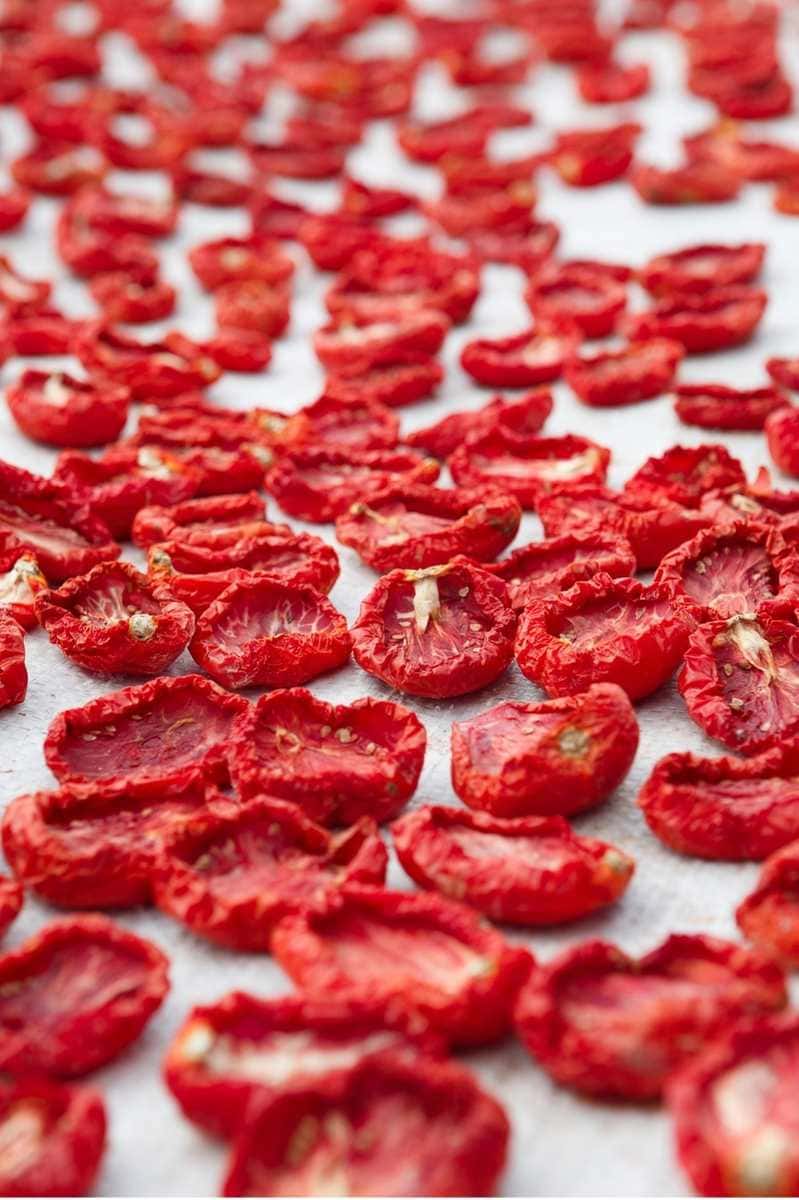
Alright, let’s visit the three methods of drying tomatoes:
Sun Dried
Sun dried tomatoes have a rich, complex flavor, and it’s fun to watch nature do its work! The downside? The weather must be just right—warm and sunny, with low humidity—for several days in a row.
Oven-Dried
Most of us already have everything we need to oven dry tomatoes: an oven, wire baking rack, and a rimmed baking sheet. This makes it the most accessible method for drying tomatoes, but it will tie up your oven for several hours, and not everyone’s oven goes low enough for drying.
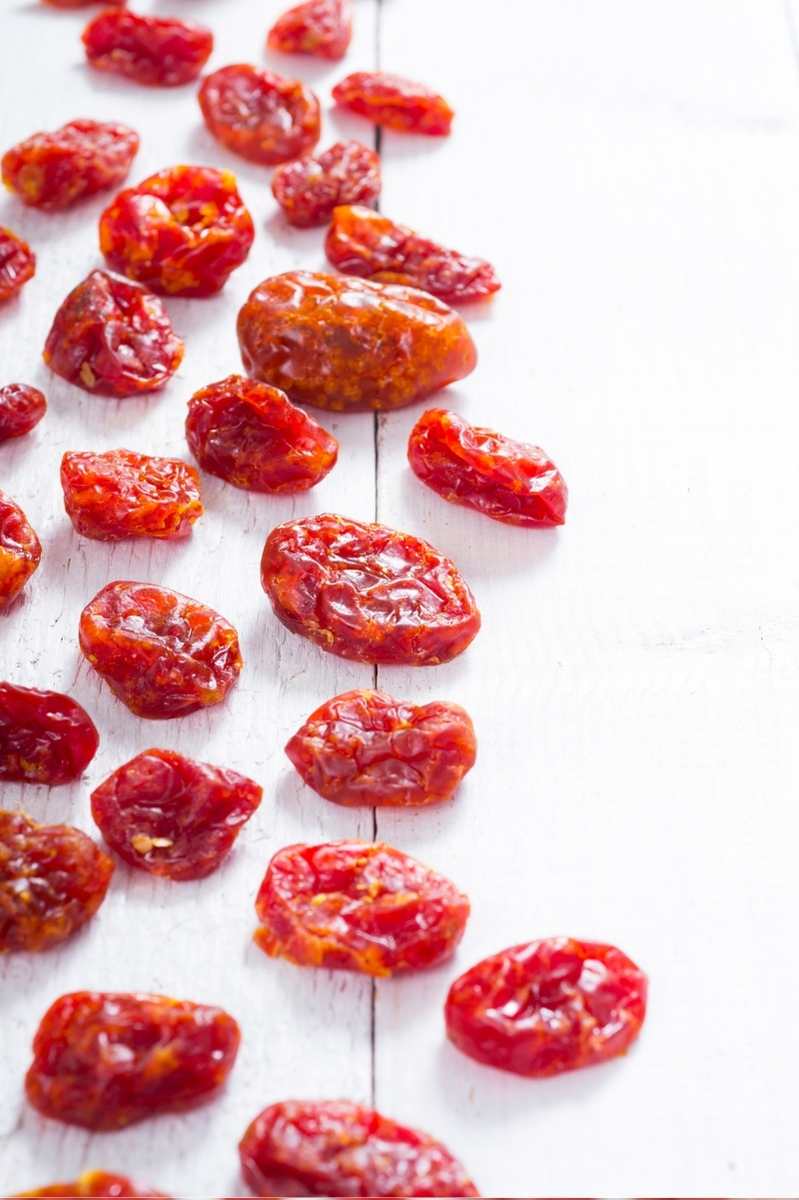
In a Dehydrator
Using a food dehydrator is definitely the simplest and most hands-off method, but you will have to invest in a dehydrator (we recommend this one: Nesco Snackmaster Food Dehydrator).
Hopefully, you now have plenty of ways to use up that bounty of tomatoes on your counter. Happy preserving!

